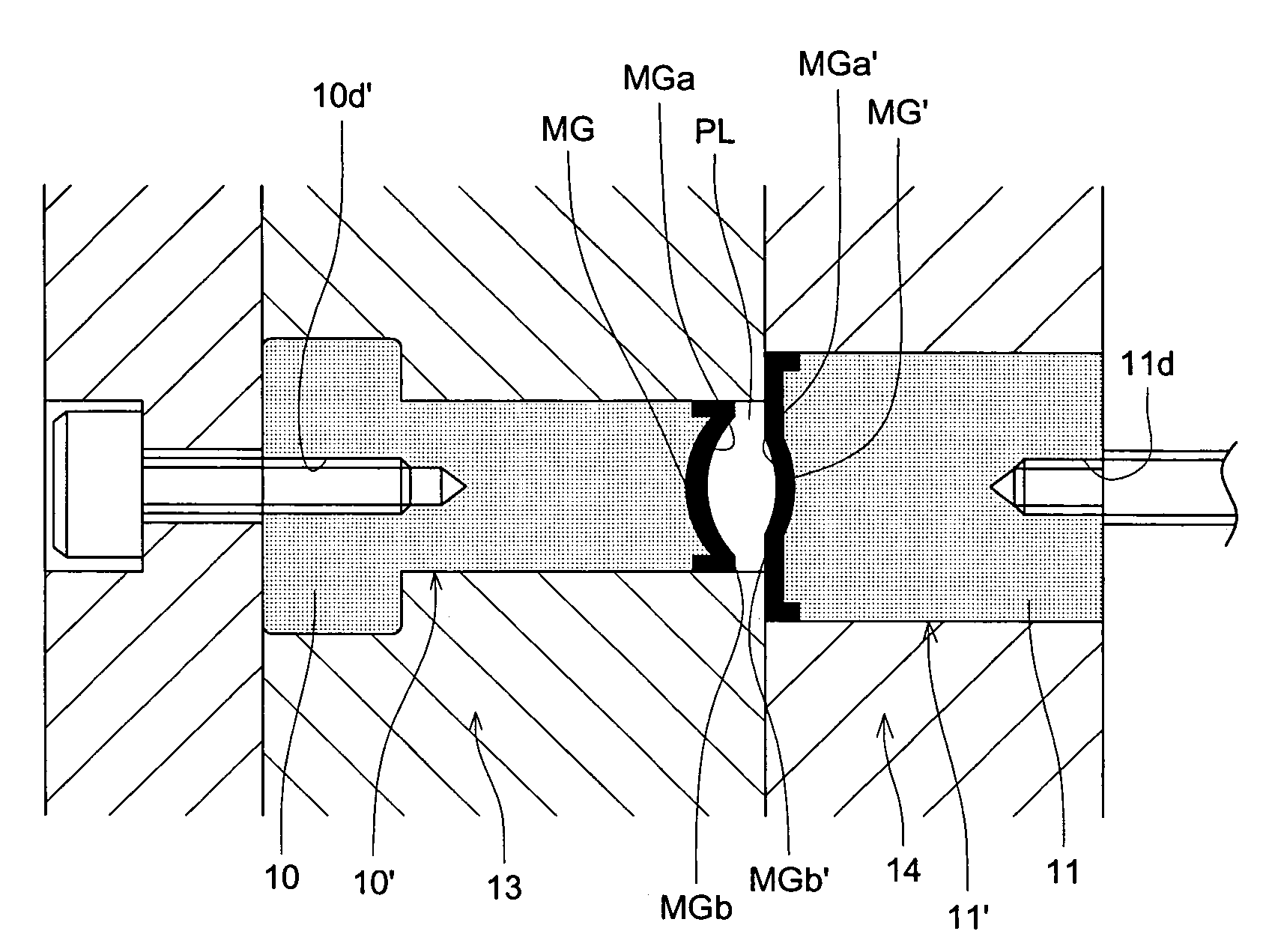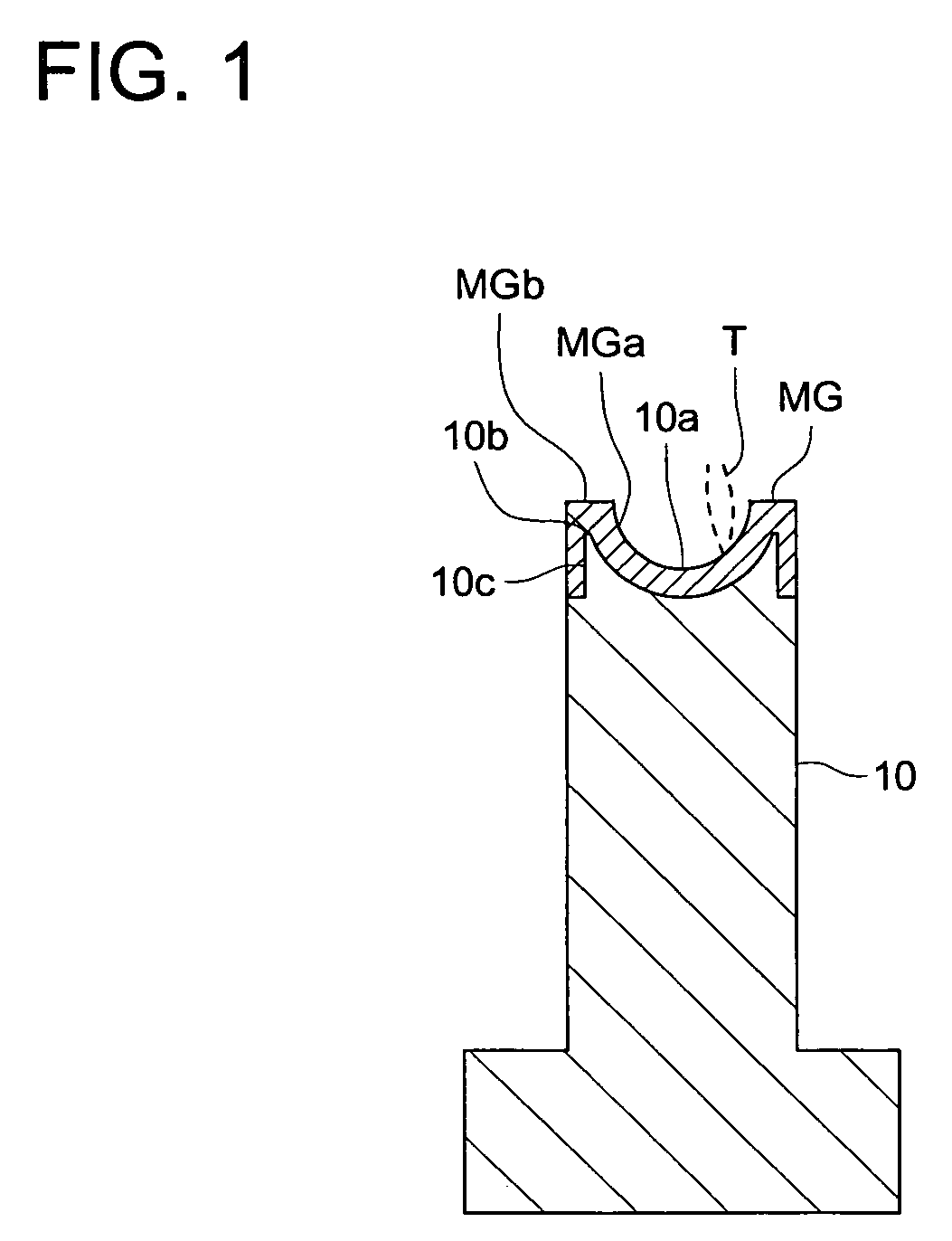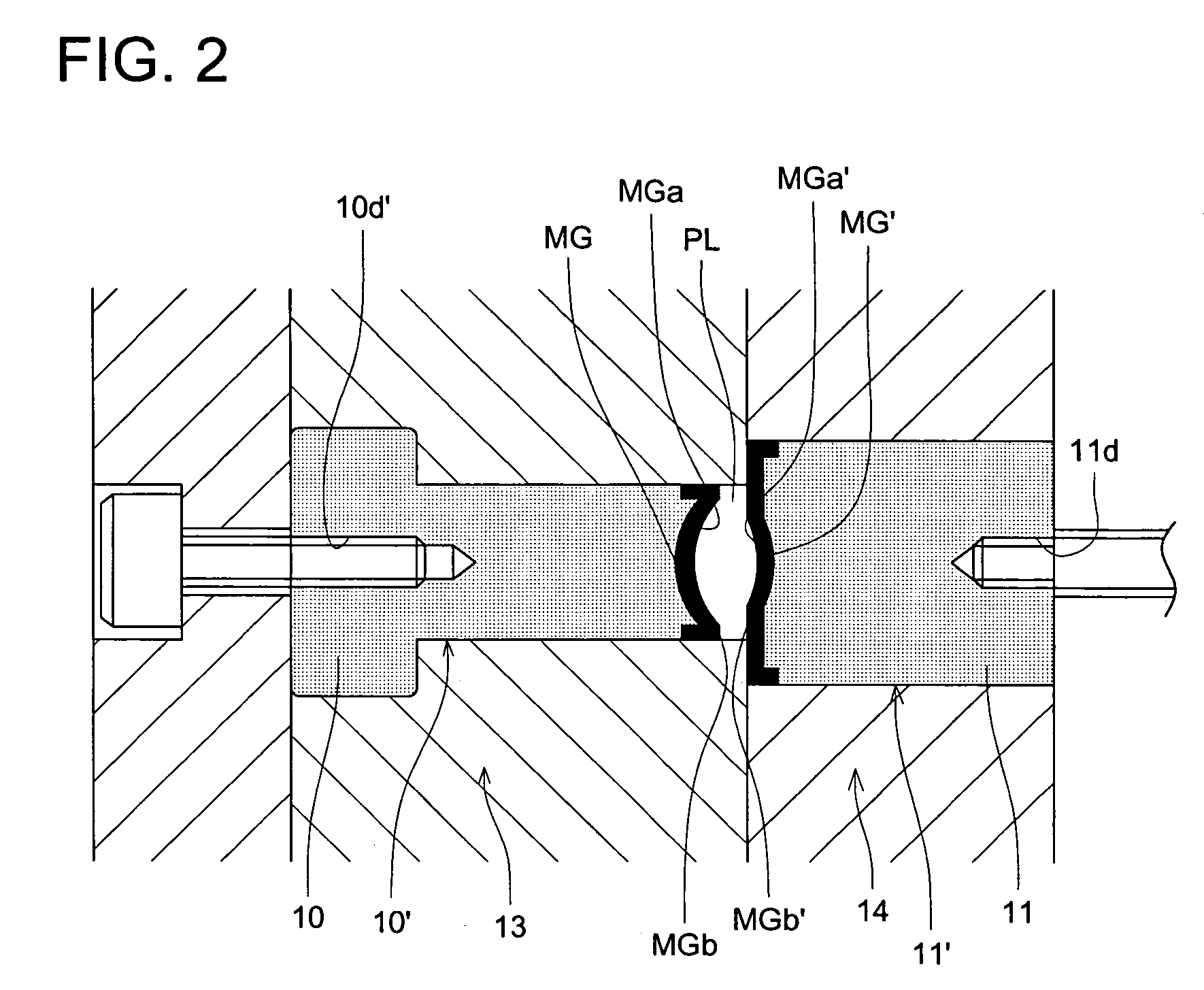Metallic mold for optical element and optical element
a technology of optical elements and molds, which is applied in the direction of dough shaping, manufacturing tools, food shaping, etc., can solve the problems of poor machinability of raw materials, delicate dispersion of optical surface transfer surfaces, so as to improve the dimension accuracy of optical elements and excellent cutting properties
- Summary
- Abstract
- Description
- Claims
- Application Information
AI Technical Summary
Benefits of technology
Problems solved by technology
Method used
Image
Examples
example
[0093]The present inventor manufactured, in the above-described manner, the metallic mold for the optical element by using Pd76Cu6Si18 series metal glass as the amorphous material of the molding transfer surface. When the surface roughness of the molding transfer surface at the time of finishing processing completion is measured, it is Ra 10 nm, and the shape error is within ±50 nm. By using this metallic mold for the optical element, the plastic lens raw material whose glass transition temperature is Tg 200° C., was molded under the molding condition of the molding resin temperature 250° C., and pressure 800 kg / cm2. Even when the molding of 2000shot is conducted, the optical elements whose accuracy is good, are stably obtained, further, the surface roughness on the molding transfer surface is Ra 10 nm, and there is no change, and particularly, the change of the shape was also not seen. For the metallic mold for the optical element of the present invention, the same effect can be ex...
PUM
| Property | Measurement | Unit |
|---|---|---|
| thickness | aaaaa | aaaaa |
| surface roughness Ra | aaaaa | aaaaa |
| glass transition temperature | aaaaa | aaaaa |
Abstract
Description
Claims
Application Information
 Login to View More
Login to View More - R&D
- Intellectual Property
- Life Sciences
- Materials
- Tech Scout
- Unparalleled Data Quality
- Higher Quality Content
- 60% Fewer Hallucinations
Browse by: Latest US Patents, China's latest patents, Technical Efficacy Thesaurus, Application Domain, Technology Topic, Popular Technical Reports.
© 2025 PatSnap. All rights reserved.Legal|Privacy policy|Modern Slavery Act Transparency Statement|Sitemap|About US| Contact US: help@patsnap.com



